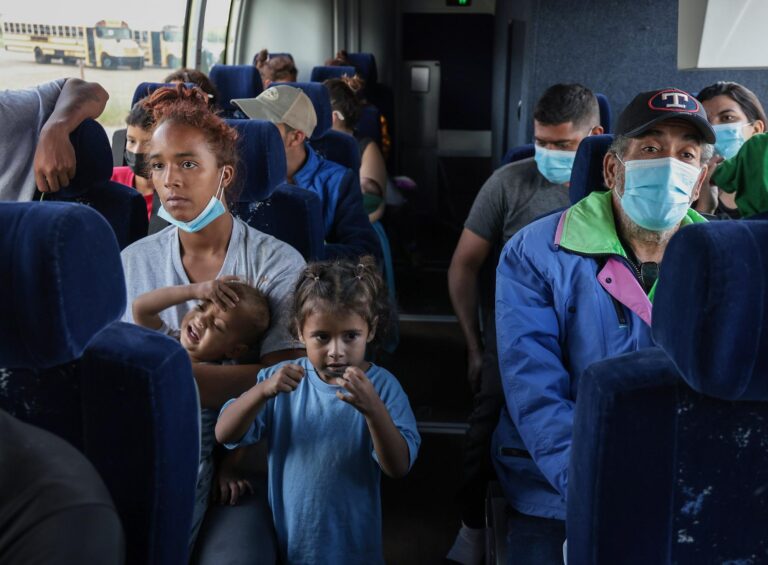San Antonio’s Immigration Landscape: A Reflection of National Patterns
San Antonio stands as a vivid example of the broader immigration trends unfolding across the United States. As one of the nation’s fastest-expanding urban centers, the city mirrors the intricate demographic, economic, and cultural transformations seen nationwide. Its immigrant population is notably diverse, encompassing individuals from Mexico, Central America, and Asia, all contributing to the city’s dynamic and evolving cultural fabric.
The experiences and developments within San Antonio’s immigrant communities provide a valuable lens through which to anticipate the direction of immigration trends leading into 2020 and beyond. Key dimensions include:
- Workforce involvement: Immigrants play a crucial role in industries such as construction, hospitality, and healthcare, driving economic vitality.
- Educational integration: The rising enrollment of immigrant youth in public schools underscores the growing need for bilingual education and tailored support programs.
- Civic participation: Increasingly, immigrants are engaging in local governance and electoral processes, shaping community leadership.
| Immigration Indicator | San Antonio (2019) | U.S. National Average |
|---|---|---|
| Percentage of Foreign-born Residents | 20% | 13.7% |
| Immigrant Workforce Participation | 65% | 62% |
| Immigrant Youth High School Enrollment | 78% | 75% |
Community Reactions and Policy Challenges at the Local Level
The mosaic of San Antonio’s neighborhoods reveals a spectrum of responses to heightened immigration enforcement. Grassroots organizations have rapidly mobilized to defend immigrant rights and offer legal assistance amid growing uncertainty. City leaders advocate for policies that strike a balance between maintaining public safety and preserving the city’s inclusive ethos. Nonetheless, underlying tensions persist, with some residents voicing concerns about resource distribution and cultural assimilation.
Municipal authorities grapple with multifaceted policy dilemmas that must reconcile humanitarian priorities with security imperatives. Prominent challenges include:
- Affordable housing scarcity: Affecting both immigrant families and long-term residents.
- Language accessibility: Barriers in public services and legal systems hinder effective communication.
- Federal-local coordination: Balancing collaboration with federal agencies while safeguarding local governance.
- Economic impact management: Weighing immigrant contributions against infrastructure and service demands.
| Policy Domain | Current Issue | Proposed Solution |
|---|---|---|
| Housing | Overcrowding in affordable units | Increase housing vouchers and develop incentives for affordable housing projects |
| Legal Services | Insufficient access to immigration legal counsel | Establish community-based legal clinics offering pro bono services |
| Public Health and Services | Language barriers limiting service effectiveness | Expand multilingual staffing and translation services |
Economic Contributions and Labor Market Implications
San Antonio’s labor market vividly demonstrates the significant influence of immigration on economic development, serving as a microcosm for national demographic shifts anticipated in 2020. Immigrant laborers are integral to sectors such as construction, hospitality, and healthcare, filling essential roles and fostering entrepreneurial ventures. Recent statistics reveal that immigrants own over 25% of small businesses in San Antonio, fueling job creation and innovation within the local economy.
- Workforce engagement: Immigrants exhibit higher labor participation rates compared to native-born workers.
- Wage dynamics: While some industries experience wage adjustments, these are generally moderate and balanced by increased consumer demand.
- Skill diversity: Immigrant workers bring a broad range of skills that complement and enhance the native workforce.
| Sector | Immigrant Workforce Percentage | Job Growth (2015-2019) |
|---|---|---|
| Construction | 38% | 12% |
| Hospitality | 45% | 15% |
| Healthcare | 30% | 18% |
Despite these positive contributions, economic integration presents challenges. Labor market tensions can arise, particularly when immigration surges coincide with technological automation and regulatory shifts. To address these complexities, San Antonio’s policymakers and business leaders are advancing workforce development initiatives that serve both immigrant and native populations. Key strategies include:
- Expanding bilingual vocational training programs to enhance employability and intercultural communication.
- Facilitating immigrant entrepreneurship through microloan programs and business development support.
- Partnering with industries vulnerable to automation to provide retraining opportunities for displaced workers.
Innovative Approaches to Inclusive Integration and Policy Reform
Developing inclusive immigration policies demands a comprehensive strategy that transcends enforcement, focusing on the social, economic, and cultural assimilation of immigrants. In San Antonio, collaborative efforts among local government, nonprofits, and business sectors have fostered community-led programs emphasizing language accessibility, employment support, and legal assistance. These initiatives recognize that genuine integration requires both safeguarding rights and empowering newcomers.
Successful reform depends on adaptable, data-driven frameworks responsive to shifting demographics and political environments. Advocates recommend measures such as:
- Implementing cultural competency training citywide for public officials and law enforcement personnel.
- Broadening access to affordable legal representation for immigration-related cases.
- Offering tax incentives to local businesses that hire and train immigrant workers.
- Establishing public forums to actively involve immigrant communities in policymaking.
These approaches aim to balance security priorities with respect for the dignity and rights of immigrants. The table below highlights outcomes from recent pilot programs enhancing immigrant integration in San Antonio:
| Program | Participation Rate | Employment Growth | Community Approval |
|---|---|---|---|
| Language Access Initiative | 78% | +12% | 85% |
| Legal Aid Outreach | 63% | +8% | 79% |
| Business Inclusion Tax Credit | 51% | +15% | 81% |
Conclusion: San Antonio as a Barometer for National Immigration Debates
As the 2020 presidential election approached, San Antonio encapsulated the multifaceted national discourse on immigration, illustrating the intertwined challenges, opportunities, and personal narratives that continue to influence public opinion and policy. This 2019 snapshot underscores the critical role of local experiences in shaping the broader political landscape, offering essential insights into how immigration issues resonate with voters and decision-makers across the country.




